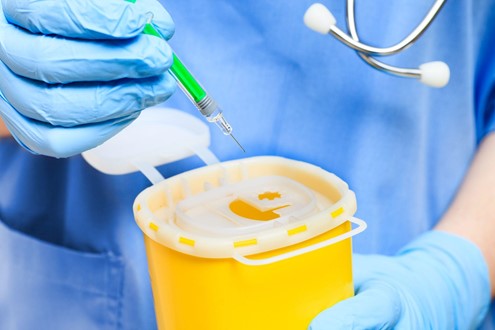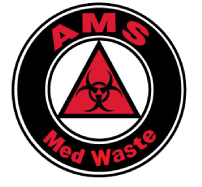
If you work at a medical office, you know that it is important to use medical waste containers to dispose of your waste safely to reduce the risks of contamination. When it comes to disposing of medical waste properly, you need to make sure that it goes in the proper container as there are different types of waste. So, what containers do you need for your type of medical waste? Let’s go through what medical waste is, go into more detail about the different types of waste, and finally, the different types of containers.
What is Potentially Infectious Medical Waste (PIMW)?
Medical Waste is a generic term for all waste that is produced in the treatment or diagnosis of patients. More specifically, it is often referred to as PIMW, Potentially Infectious Medical Waste. This type of waste is generated from exposure to tissue, bodily fluids or in some way has been exposed to potentially infectious materials or any part of the body that has been in contact with a disease or organ transplant. It may be contaminated blood, plasma, urine, stool, or other fluids. Medical Waste consists of biohazardous material, sharps waste, medical waste, and trace-chemotherapy waste.
The Kinds of Medical Waste
Pathological Waste – One of the most common medical waste types is Pathological waste. Wastes such as tissues, bodily fluids, organs, and surgical specimens fall under this category.
Sharps Waste – Sharps waste consists of sharp points or edges that could cut or puncture the skin, of humans, or animals. A needle, blade, syringe, or staple are examples of sharp objects. Any sharps, whether used or not, are considered potentially infectious waste.
Pharmaceutical Waste – Pharmaceutical waste includes expired, unused, split, and contaminated drugs, vaccines, and serums that are no longer needed and must be disposed of properly. A hospital, doctor’s office, veterinary office, and even a household would produce this type of waste.
Chemotherapy Waste – The two main types of chemotherapy waste are trace waste and bulk waste. The term trace waste refers to waste contaminated by or contained in one of the agents below. Trace waste includes bags, IV tubes, vials, and anything else that could have chemotherapy drugs. This type of waste is less than 3% of the original volume of the drug.
Bulk is the second kind of Chemotherapy waste. It refers to any item that contains more than 3% of the original volume of chemotherapeutic agents.
Types of Medical Waste Containers
Since there are different kinds of medical waste, there are different types of medical waste containers. Not only that, but some containers are reusable, and some containers are disposable. Let’s go through all of them together, so you know which medical waste container you require.
The two main containers are reusable and disposable. Reusable containers are, just as the name suggests, reusable medical waste containers with red liner bags to contain the loose medical waste items. Disposable containers are made for easy disposal, as the entire container also gets destroyed along with the items inside. They are also often small and compact so that they can be stored in cabinets. These containers can hold Pathological and Sharps waste.
The last two are tailored to the type of medical waste; they are Trace Chemo containers that are bright yellow and will hold both trace waste and bulk waste. The last is pharmaceutical containers that hold pharmaceutical waste; these containers vary in color, but most commonly are blue and white.
The next step is to contact your local medical waste disposal company so they can arrange for you to get the containers you need and schedule a regular removal service.
Ready to get rid of your medical waste? Contact AMS Med Waste for a quote.



